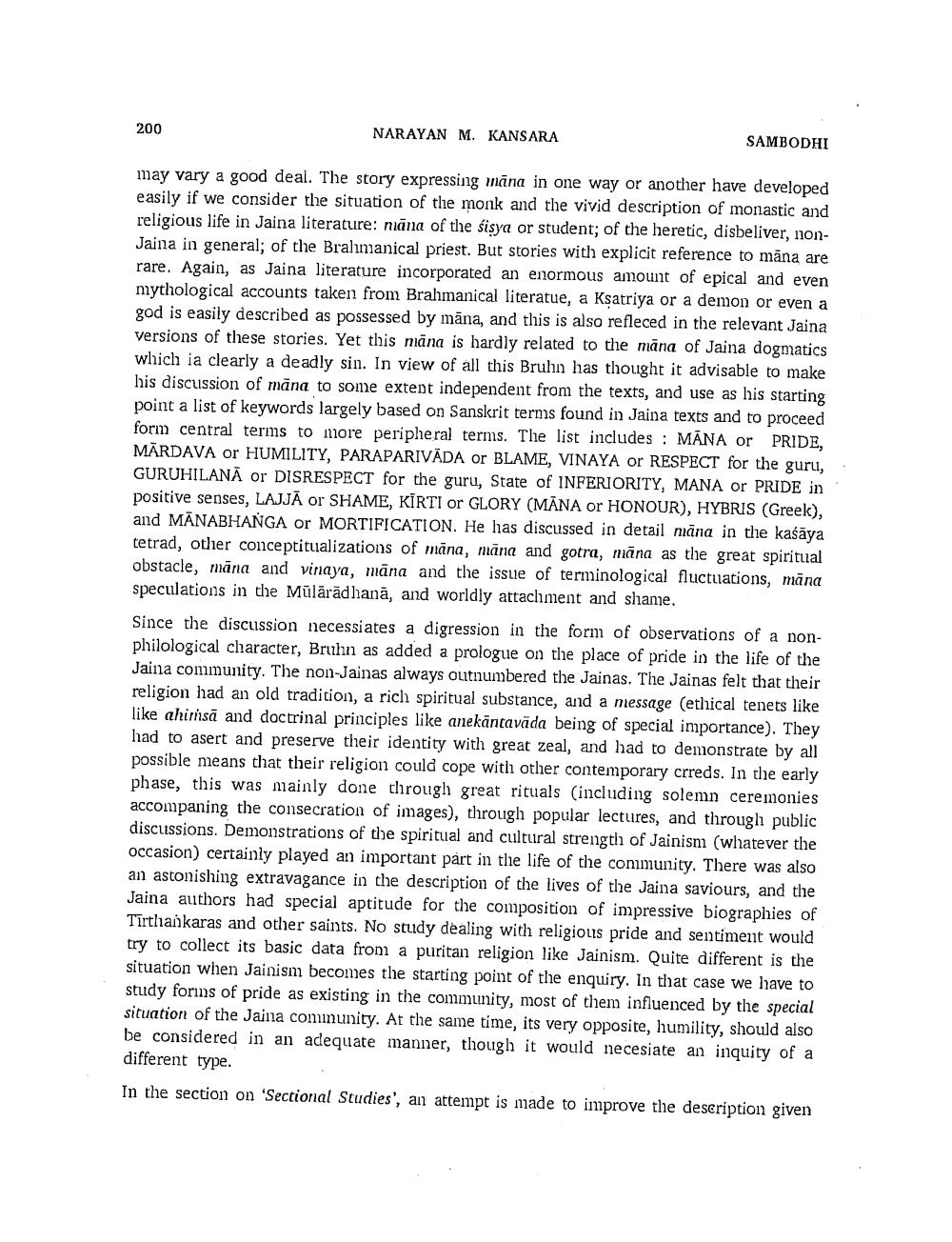________________
200
NARAYAN M. KANSARA
SAMBODHI
may vary a good deal. The story expressing mana in one way or another have developed easily if we consider the situation of the monk and the vivid description of monastic and religious life in Jaina literature: māna of the sisya or student; of the heretic, disbeliver, nonJaina in general; of the Bralinanical priest. But stories with explicit reference to māna are rare. Again, as Jaina literature incorporated an enormous amount of epical and even mythological accounts taken from Brahmanical literatue, a Ksatriya or a demon or even a god is easily described as possessed by māna, and this is also refleced in the relevant Jaina versions of these stories. Yet this māna is hardly related to the mana of Jaina dogmatics which ia clearly a deadly sin. In view of all this Bruhn has thought it advisable to make his discussion of māna to some extent independent from the texts, and use as his starting point a list of keywords largely based on Sanskrit terms found in Jaina texts and to proceed form central terms to more peripheral terms. The list includes: MANA or PRIDE, MĀRDAVA or HUMILITY, PARAPARIVĀDA or BLAME, VINAYA or RESPECT for the guru, GURUHILANĀ or DISRESPECT for the guru, State of INFERIORITY, MANA or PRIDE in positive senses, LAJJĀ or SHAME, KIRTI or GLORY (MĀNA or HONOUR), HYBRIS (Greek), and MĀNABHANGA or MORTIFICATION. He has discussed in detail māna in the kaśāya tetrad, other conceptitualizations of māna, māna and gotra, māna as the great spiritual obstacle, māna and vinaya, māna and the issue of terminological fluctuations, mana speculations in the Mülārādhanā, and worldly attachment and shame. Since the discussion necessiates a digression in the form of observations of a nonphilological character, Bruhn as added a prologue on the place of pride in the life of the Jaina community. The non-Jainas always outnumbered the Jainas. The Jainas felt that their religion had an old tradition, a rich spiritual substance, and a message (ethical tenets like like ahirnsä and doctrinal principles like anekāntaväda being of special importance). They had to asert and preserve their identity with great zeal, and had to demonstrate by all possible means that their religion could cope with other contemporary crreds. In the early phase, this was mainly done through great rituals (including solemn ceremonies accompaning the consecration of images), through popular lectures, and through public discussions. Demonstrations of the spiritual and cultural strength of Jainism (whatever the occasion) certainly played an important part in the life of the community. There was also an astonishing extravagance in the description of the lives of the Jaina saviours, and the Jaina authors had special aptitude for the composition of impressive biographies of Tirtlankaras and other saints. No study dealing with religious pride and sentiment would try to collect its basic data from a puritan religion like Jainism. Quite different is the situation when Jainism becomes the starting point of the enquiry. In that case we have to study forms of pride as existing in the community, most of them influenced by the special situation of the Jaina cominunity. At the same time, its very opposite, humility, should also be considered in an adequate manner, though it would necesiate an inquity of a different type.
In the section on 'Sectional Studies', an attempt is made to improve the description given




